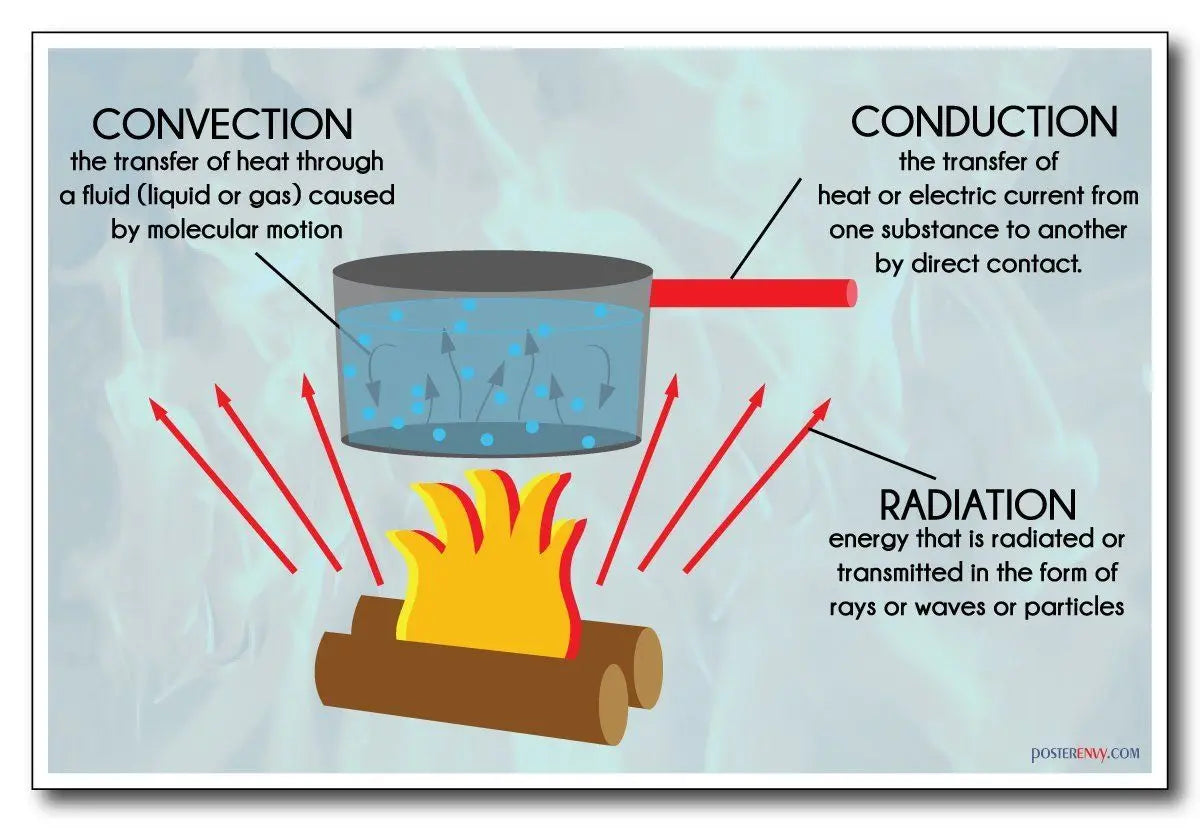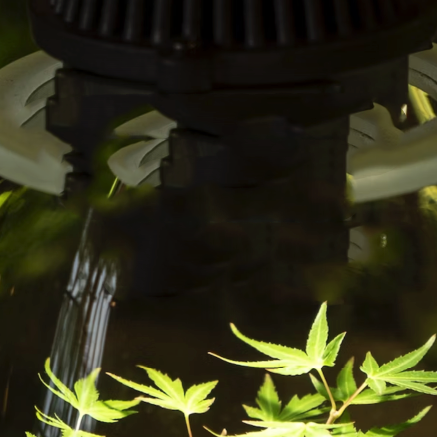As something cools down, the speed of vibration of the atoms slows down. If cooling continues, there is a point where the atoms completely stop vibrating. This is at a very chilly -273.15 degrees C (which is sometimes called absolute zero or 0 Kelvin).
There are 3 ways that heat can travel. They're conduction, convection and radiation:
Thermal Conduction
Conducted heat is heat that is conducted along a solid. For example, if you take a bar of metal and heat one end of it, the heat will travel along the bar to the other end.
This happens because the vibrating atoms are next to each other in the solid and they pass some of this vibration energy to atoms with less energy which are next to them. How quickly this happens on how good a conductor is.
Thermal Convection
Convection is the name given to how heat travels through a liquid or gas. It is due to the fact that liquids and gases "flow" and move.
For example, if water is heated in a kettle, the water touching the heating element at the bottom gets hotter by thermal conduction. The hot water is less dense than the colder water above it so it rises in a thermal convection current. The rising hot water becomes mixed with the colder water above and is replaced by colder, denser water next to the heating element.
Thermal Radiation
There is a way that "heat" can be transferred from one place to another without involving atoms or "matter". This is called radiation. The best example of this is how heat from the sun travels through the vacuum of space to get here to us on planet earth.
Thermal radiation is actually electromagnetic radiation rather like radio waves or visible light. It is mostly in the infrared region between 4000nm and 100,000nm.
Any object which is at a higher temperature than absolute zero gives off some thermal radiation. The radiation is absorbed by atoms and molecules, particularly solids, where it warms them up. This is why we can feel the warmth of the sun when it hits our skin, even when the air is cool.
The amount that objects absorb or emit thermal radiation depends a lot on their colour and if it is glowing from heat. Black objects tend to absorb and emit thermal radiation a lot. White tend to absorb and emit it less well. Air is colourless so it absorbs and emits thermal radiation very poorly.
The way that air warms up is that thermal radiation from the sun warms land and buildings etc. These then warm the air in contact with them firstly by thermal conduction and then that circulates the warmth by thermal convection (like the water in the kettle).
Heating of Plants by Grow Lights
Up until recently, the most common sort of flowering light was an HPS because of their intensity, efficiency, and spectrum.
HPS lamps get hot. This means that they heat the air touching them by thermal conduction. The hot air then rises and heats the rest of the air in the grow space by thermal convection.
However, that is not all. HPS lamps also emit quite a lot of infrared because they glow. The infrared thermal radiation heats any objects that it hits, including plants.
LED grow lights, which are becoming more and more popular due to recent, significant jumps in technology, are very different to HPS. Because they are so efficient, the power which goes into them is used to make light and they produce little heat. Also, they produce barely any infrared.
Plants generally like to be at about 25-28 degrees C when the lights are on during the flowering period. This is best measured with an infrared leaf thermometer like the IR Pocket.
With HPS grow lights producing a lot of heat it can be tricky in summer to stop the temperature of your plants going too high. If it gets too hot, upgrade your extraction system. Or, if you have a dimmable ballast you can turn your light down.
With the new crop of super-efficient LED grow lights, there can be the opposite problem. The grow room temps can get rather low, particularly during Winter. If it gets too cold then try adding heating to the grow space and try turning your extraction system down to low with a fan speed controller.

